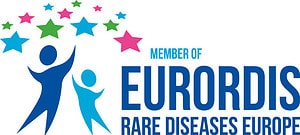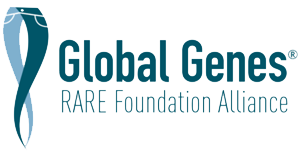General Info for TK2d: Thymidine Kinase 2 Deficiency
Overview
Thymidine Kinase 2 Deficiency, also known as TK2D, is a rare mitochondrial condition. TK2D causes at least one part of the body to have low levels of mitochondrial DNA (mtDNA). Conditions that cause low levels of mtDNA, including TK2D, are sometimes called mitochondrial depletion syndromes. Mitochondria are parts of a cell that help turn the energy we get from food into energy that the body can use. They are also important in the communication between body parts and creating other materials the body needs. Mitochondrial conditions can cause a variety of signs and symptoms in many parts of the body, particularly those that use a lot of energy like muscles and the brain.
Alternative Names
- TK2D;
- mitochondrial DNA depletion syndrome 2;
- mitochondrial DNA depletion syndrome 2 (myopathic type);
- MTDPS2;
- mitochondrial DNA depletion myopathy- TK2-related;
- TK2-related mitochondrial DNA maintenance defect, myopathic form
Genetics
Affected Genes
TK2
Inheritance Type(s)
- Autosomal recessive
Cause and Genetics
TK2D is an inherited genetic condition, meaning it is passed down in a family. People usually have two copies of the TK2 gene, one inherited from each parent. TK2D occurs when there are changes in both copies of the TK2 gene (autosomal recessive inheritance). Someone who has a change in only one copy of the TK2 gene is called a carrier, and they usually do not have any medical symptoms. If both parents are carriers, there is a 1 in 4 chance with each pregnancy that their child will have TK2D. Both males and females can have TK2D.
Frequency
Frequency (Global)
The exact frequency of TK2D is not known. It is thought to be very rare. Less than 120 people with TK2D have been described in the medical literature. It is thought this condition may be underdiagnosed, especially later-onset forms of TK2D.
Affected Biological Gender
Both Male and Female
Signs and Symptoms of TK2d: Thymidine Kinase 2 Deficiency
TK2D disease causes a range of signs and symptoms. These may differ greatly, even among members of the same family, so always check with your provider if new symptoms appear or you are concerned.
There are three main types of TK2D that describe when someone first shows signs of TK2D. The main symptom of all types of TK2D is called primary mitochondrial myopathy (PMM). PMM is a specific type of muscle weakness and low muscle tone (hypotonia). See our related PMM factsheet for more information about PMM.
People who begin to show signs and symptoms of TK2D before one year of age are said to have infantile-onset TK2D. People with this type of TK2D have severe muscle changes and weakness, and often die in early childhood. Other signs and symptoms of infantile-onset TK2D can include:
- Breathing problems and respiratory failure
- Chest infections
- Feeding difficulties
- Loss of muscle tissue
- Loss of motor skills or general motor delay
- Lactic acidemia
- High levels of CK in the blood
- Seizures
- Cognitive impairment in some cases
- Hearing loss
People who begin to show signs and symptoms of TK2D between the ages of 1-12 years are said to have childhood-onset (sometimes called juvenile onset) TK2D. Muscle features can vary widely in severity for people with this type of TK2D. Other signs and symptoms of childhood-onset TK2D can include:
- Respiratory failure
People who begin to show signs and symptoms of TK2D after age 12 are said to have late-onset or adult-onset TK2D. People with this type of TK2D tend to have more mild muscle features, but this can vary widely. Other signs and symptoms of adult-onset TK2D can include:
- Trouble chewing or swallowing (dysphagia)
- Drooping of the eyelid (ptosis)
- Trouble or inability to move the eyes and eyebrows called chronic progressive external ophthalmoplegia (CPEO)
- Facial weakness
- Respiratory failure/shortness of breath
- Fatigue and weakness of the upper arm and shoulder
Diagnosis
TK2D can be diagnosed by:
- Measuring the amount of mitochondrial DNA (mtDNA) in skeletal muscles. People with TK2D have very low mtDNA in their skeletal muscles, or can have multiple mtDNA deletions.
- Looking at a small piece of muscle tissue under a microscope (muscle biopsy). Muscles of people with TK2D can show signs called ragged red fibers (RRF) and/or COX-deficient fibers.
- Performing a genetic test to look for changes in the TK2D People with TK2D usually have genetic changes on both copies of their TK2Dgenes (sometimes called biallelic mutations).
Since the signs and symptoms of TK2D can look like those seen in other mitochondrial or muscle conditions, someone being evaluated for TK2D may have additional tests or imaging done as part of their workup.
TK2D is not included on newborn screening panels. If there is a known family history of TK2D, or if a mother is a known carrier, prenatal testing can be performed on amniotic fluid (the fluid surrounding a baby) or chorionic villi (a specific part of the placenta).
Newborn Screening: Recommended Uniform Screening Panel (RUSP)
No
Treatment of TK2d: Thymidine Kinase 2 Deficiency
Treatment and Management
Before beginning any treatment or therapy, please consult with your physician.
There is currently no FDA-approved therapy for TK2D.
Treatment and management of TK2D is symptomatic and supportive. Depending on the severity of symptoms, this may include:
- Physical therapy and aerobic exercise to support muscle function
- Motor aids like wheelchairs
- Feeding assistance like nasogastric or gastrostomy tubes (sometimes called ng-tubes or g-tubes)
- Hearing aids or cochlear implants for hearing loss
- Chest therapy or ventilation for low lung (pulmonary) function or failure
- Traditional treatment of chest infections
- Traditional medications for seizures called antiepileptic drugs
- Avoidance of mitochondrial toxins like certain drugs, tobacco, and alcohol
- Mitochondrial supplements
- Special school accommodations
Individuals living with TK2D typically work with several healthcare providers regularly based on their symptoms, which may include:
- Neurology for the muscles and brain
- Audiology for hearing
- Pulmonology or respiratory therapy for lung function
- Gastroenterology, feeding therapy, or occupational therapy for chewing and swallowing
- Physical therapy for muscle weakness
- Speech therapy
It is important that all those living with or caring for someone with TK2D have an emergency protocol letter. These letters, which are written and signed by a doctor, share details about prescribed treatment during a crisis and in emergency room settings.
Type of Specialists and Clinicians
- Audiology
- Neurology
- Physical and occupational therapy
Clinical Trials
For specific details on other clinical trials visit the MitoAction Clinical Trial page or www.clinicaltrials.gov.
Resources
- TK2d UCB’s informational site about TK2d
- UCB’s site My MitoTk2D Platform: Track your daily journey, connect with other patients and families, and provide valuable deidentified data to clinicians and researchers
- Expert Series on Tk2D
- Thymidine Kinase 2 Deficiency – Symptoms, Causes, Treatment | NORD
- TK2-related mitochondrial DNA depletion syndrome, myopathic form: MedlinePlus Genetics
Connecting with others impacted by a rare disease allows for vital information to be shared about day-to-day life, prevents isolation, and gives hope. Please contact MitoAction for peer support opportunities at 888-MITO-411 or email mito411@mitoaction.org.
Other resources we recommend are:
Download the TK2d: Thymidine Kinase 2 Deficiency Fact Sheet (PDF)
MitoAction does not provide medical advice, diagnosis, treatment, or legal advice. It is essential that all those living with or caring for someone with a Mitochondrial or FAOD disease have an emergency protocol letter. These letters, which are written and signed by a doctor, share details about prescribed treatment during crises and in emergency room settings. Always check with your doctor if you or your child has concerns as everyone may present with symptoms differently. Before beginning any treatment or therapy, please consult with your physician.
Sources:
- GeneReviews https://www.ncbi.nlm.nih.gov/books/NBK114628/
- OMIM https://www.omim.org/entry/609560
- NORD https://rarediseases.org/rare-diseases/thymidine-kinase-2-deficiency/
- UCB’s site https://www.tk2d.com/
Last Updated: 07/05/2024









